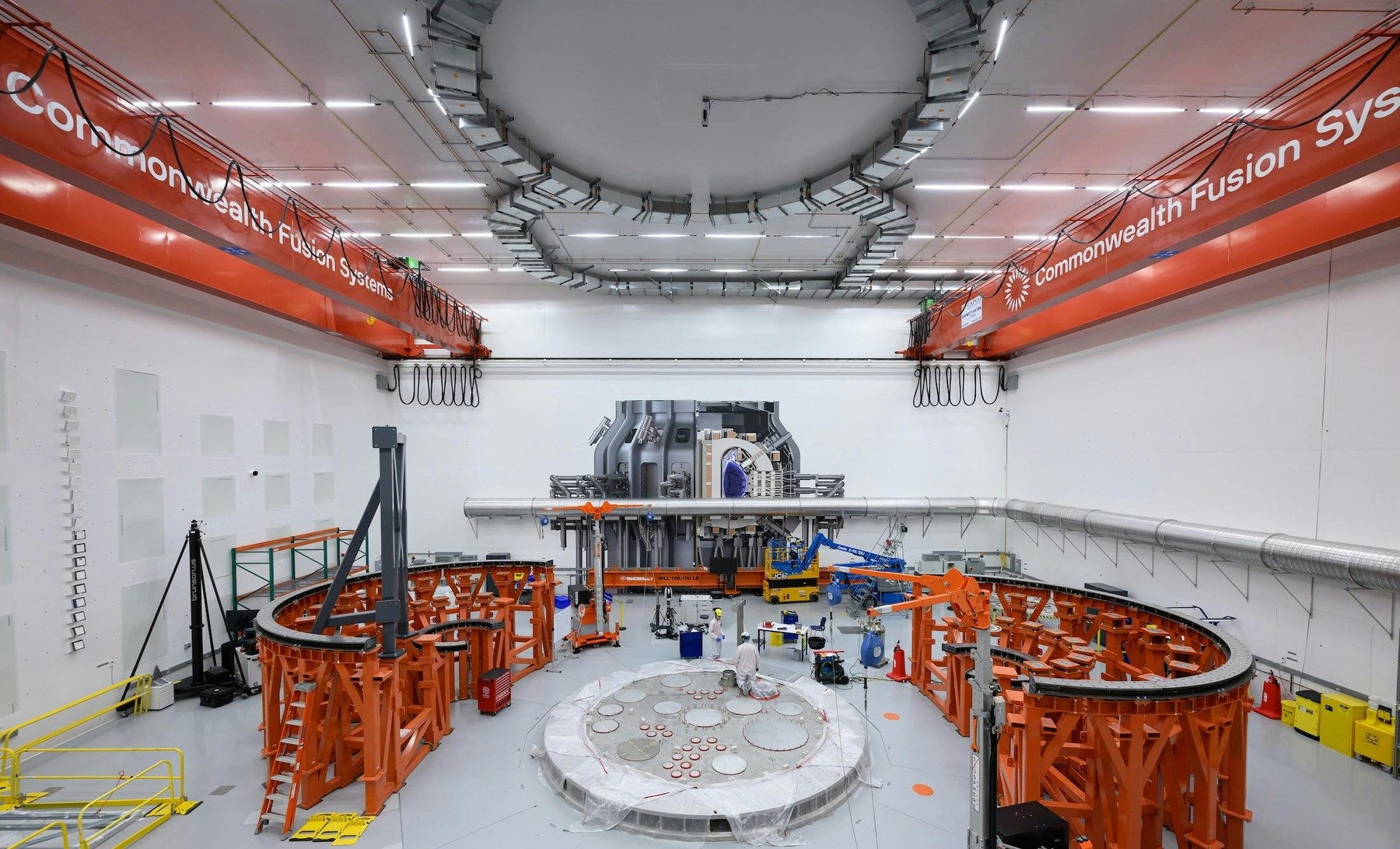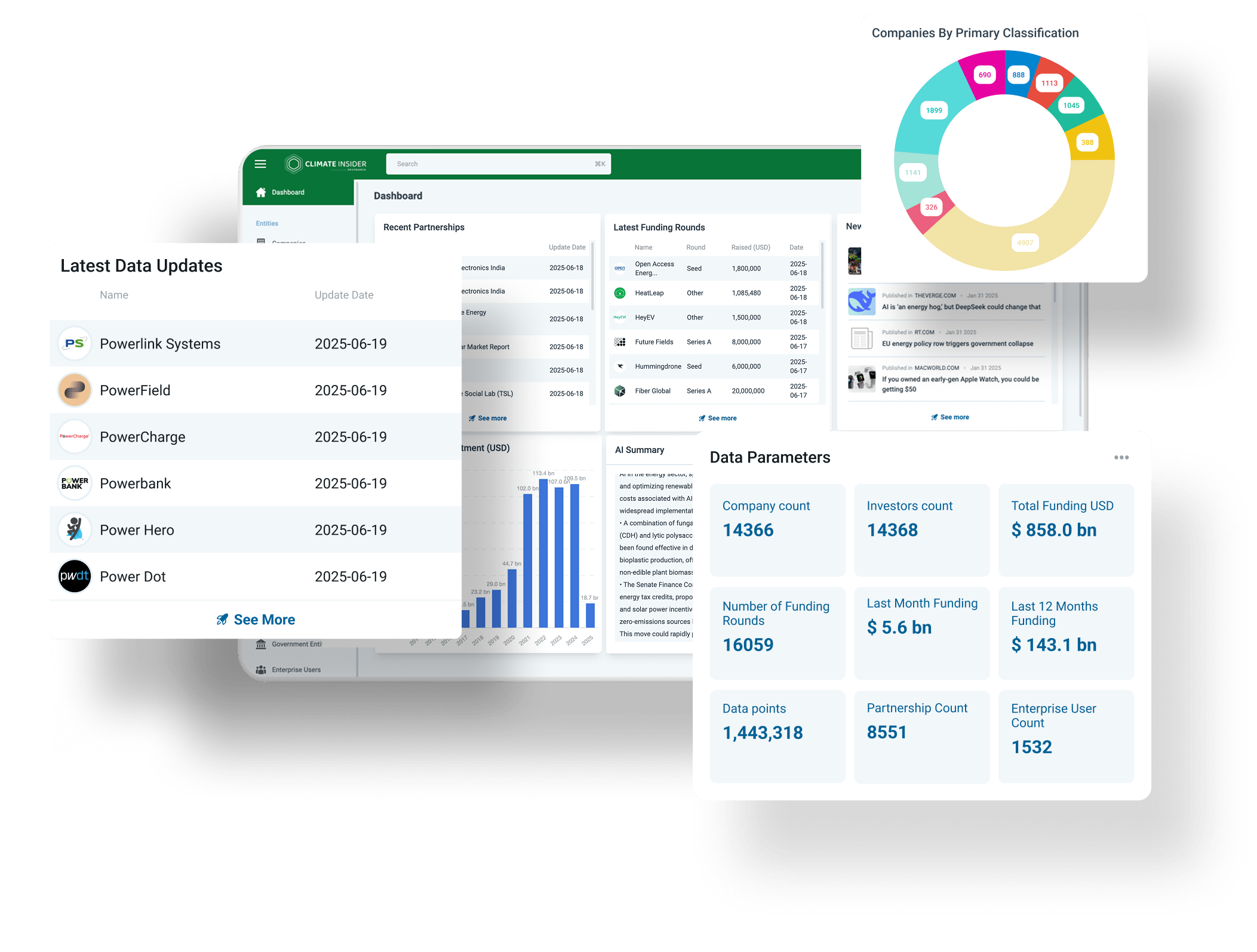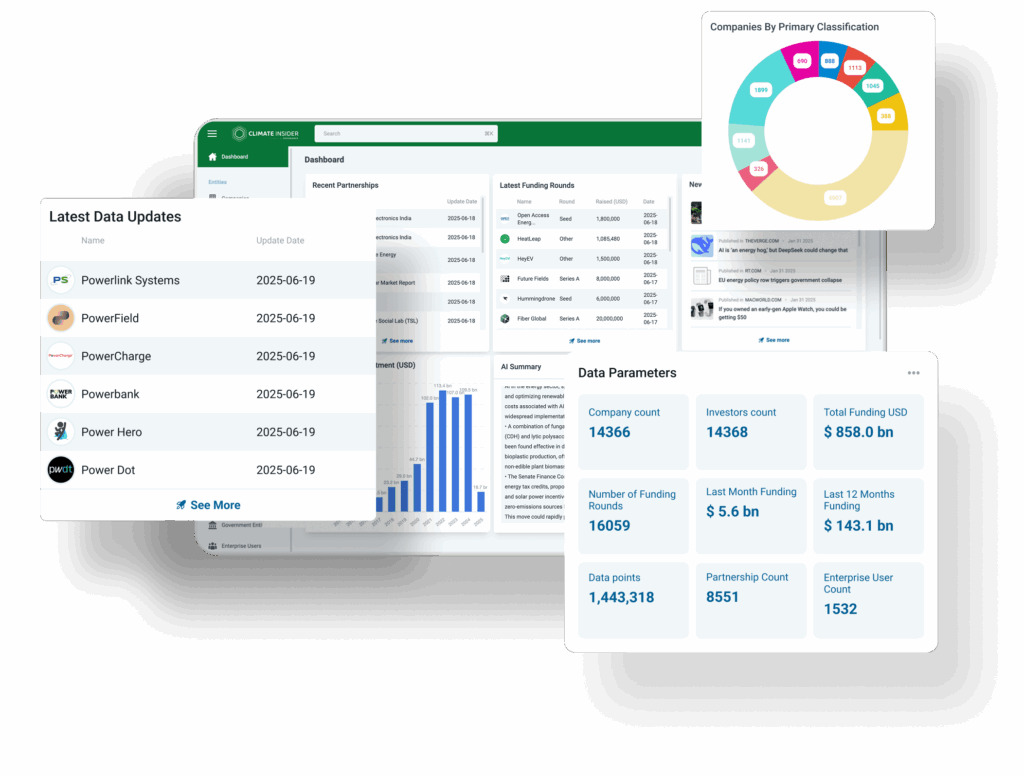Thousands of years ago, at the dawn of civilization, humans relied on the sun, wind, and waves for energy. Today, we’re desperately trying to get back to those habits.
Since the Industrial Revolution, which began in the 1700s, fossil fuels experienced a meteoric rise. First came coal, then oil, then natural gas; together, they revolutionized humanity’s way of life. But now, they’re also wreaking havoc on it.
Read also: Top 10 Solar Energy Companies in USA [2024]
Renewable Energy: A Brief Overview
The atmospheric concentration of CO2, a heat-trapping gas released by fossil fuels, is 50% higher than before the Industrial Revolution – far more than can be removed by nature. This, plus an uptick in other greenhouse gases like methane, has already led to a 1.1° Celsius increase (and counting) in global temperatures since the revolution began. The consequences of such a rise – sea level rise, heat waves, droughts and wildfires, to name a few – are already taking their toll, and could become an existential threat to not just countless plants and animals, but humanity itself.

The growing public concern over climate change and resulting legislative action (such as the 2015 Paris Accords and, in the US, the 2022 Inflation Reduction Act, or IRA) have spurred efforts to seek out energy from renewable sources. Today, these makeup about 30% of the world’s energy consumption, with the most popular options being solar, wind, and hydroelectric methods. But it’s nowhere near enough; the International Energy Agency recommends that to reach net-zero emissions by 2050 as set out in the Paris Accords, at least 90% of energy must come from renewables.
Read also: Top 10 Renewable Energy Investors in 2024
The Growing Landscape of Renewable Energy Startups
There’s already a thriving industry for mature tech like wind and solar, but the increased need for renewables has given rise to a growing number of startups that aim to tackle the issue in new ways. According to an analysis by Oliver Wyman, investment into renewable energy startups grew sixfold from 2019 to 2022, rising from $1.9 billion to $12.3 billion. The majority of it came from the US, followed by Europe; the firm attributes much of this rise to the US’s IRA and Europe’s Net Zero Industry Act, which bolster subsidies for renewable energy and make it easier for companies to enter the scene, thus appealing to investors. Still, there was a marked dip in funding in 2023, stemming primarily from ‘tightness’ in the European market, so the firm. But investment from Asia Pacific doubled in 2023, with China – already a world leader in mature renewable energy – aiming to take on a bigger innovative role, though the US still dominates startup investment.
The renewable energy startup scene can be divided into several subcategories – some more established, others still making a name for themselves. Obviously, one of them is renewable energy generation itself, which mostly involves new applications of wind and solar energy or improvements to its infrastructure. This is a popular niche, receiving over a quarter of 2022’s investment. Even more popular, though, are batteries and energy storage methods, which received 40% of that year’s funding. It’s in demand for a reason; since so much renewable energy depends on nature and is therefore produced on an irregular basis, widespread storage methods improve its availability and reliability. Green or blue hydrogen, meanwhile, is up-and-coming sector, winning $1.5 billion in 2023 (compared to $600 million in 2022). Another sector on the rise is software to help with carbon accounting and analytics, reflecting the heightened interest in climate mitigation in both corporate and private users.
The renewable energy sector also includes fusion technology and carbon capture and removal, both long-haul strategies for banishing fossil fuels that involve huge cash infusions and decades in development – which is probably why such startups were the least popular investment options in 2023.
Read also: Top 5 Carbon Capture Startups in 2024
5 Leading Renewable Energy Startups
1. Energy Generation: Enpal

Enpal, founded in Germany in 2017, is only a renewable energy startup by age; the company is already one of the leading solar energy providers in Germany with over 70,000 households serviced. Through Enpal, people can either buy or rent solar panels, the latter saving customers thousands in upfront costs; everything from the panels themselves to their installation is provided in one package. Enpal also offers heat pumps, electric vehicle chargers, and Enpal.One, an AI-driven platform that manages the household’s energy and connects its solar energy generation to the energy market to save or even earn money.
2. Batteries and Storage: Field Energy

All that energy needs to be stored somewhere, and Field Energy hopes to address that. The UK-based company, founded in 2020, develops battery sites for storing renewable energy as part of its vision to aid the transition to renewable infrastructure in record time. For now, it has two sites in operation and another three under construction, which together would have a capacity of about 230 megawatts per hour (MWh) – the equivalent of powering almost 200 average American homes for a month. But the batteries aren’t being sapped nonstop; they charge up at times when the grid is running on more renewables, and discharge when it flips to fossil fuels, increasing the proportion of renewables available to consumers.
3. Infrastructure: Char.gy

Electric vehicles are arguably the hottest climate tech trend, but the power they run on often doesn’t come from renewable sources. What’s more, charging stations – or lack thereof – are turning consumers off. These are problems Char.gy aims to tackle with its electric charging network, already deployed at over 3,000 sites in the UK. This UK-based renewable energy startup was established in 2020 from founder Richard Stobart’s desire to own an electric vehicle despite not having a driveway – which, Char.gy claims, is the case for 40% of UK households. Its solution is to work with local governments to plant its stations on residential streets to make for a hassle-free charging process. It claims to run on 100% renewable energy and offers the cheapest tariffs when charging at night.
4. Hydrogen: Electric Hydrogen

Hydrogen is the most abundant element in the universe, but obtaining it here on Earth is proving to be somewhat of a headache. Since the vast majority is produced using natural gas, it’s responsible for 40% of heavy-industry emissions. If it were a country, it would be the world’s 7th largest polluter.
At least, that’s what Electric Hydrogen claims. The US-based renewable energy startup was founded in 2020 with a goal of developing standardized, simple, yet highly efficient plants to lower the cost of green hydrogen: hydrogen produced only via renewable energy. Due to the complexities of electrolysis – the process used to produce green hydrogen – the stuff usually costs a pretty penny. But according to Omer Shkeir, Electric’s head of EMEA business development, the company’s standardized 100MW plants cost less than half than industry averages, resulting in its hydrogen costing just $0.5/kg more than that obtained via nonrenewables (as reported by Hydrogen Insight). With the US’s tax breaks of up to $3/kg of green hydrogen, it might become even cheaper. Electric Hydrogen recently became Green Hydrogen’s first unicorn; now, the company is working on getting its first 100MW plant online, which it’s building for New Fortress Energy.
5. Accounting: Greenly

Renewable energy is all fine and dandy, but what good is it to companies if they can’t flaunt their using it? That’s where carbon accounting companies like Greenly come in; this renewable energy startup, founded in 2019 and based in Paris, helps companies track their carbon footprint and helps them figure out what to do about it. Its model hinges on software that goes through the company’s data to analyze each and every possible emissions source, then compiles this in a user-friendly interface and suggests mitigation strategies. Supported by heavyweight investors like Fidelity and Energy Impact Partners, Greenly has notched over 2,000 corporate clients including Huawei, L’Oreal, and Tripadvisor, though around half of its client base consists of small-to-medium-sized businesses. According to co-founder Arnaud Delubac, most of these are mainly interested in the service for marketing or certifications (as reported by Forbes), spurred by consumer demand for green policies and new climate regulations in the EU and US. The latter development was a major driver for this renewable energy startup’s success in its latest €48 million Series B funding round, leaving it well-positioned to take on the carbon accounting market, estimated to be worth up to $100.8 billion by 2032 (according to Fortune Business Insights).
Read also: Top Green Hydrogen Companies
Why Might Businesses Be Interested In Renewable Energy Startups?
Renewable energy startups and established businesses can be a match made in heaven. Startups are usually defined by their ability to move and innovate quickly, unconstrained by sluggish corporate processes, but they often lack cash. Meanwhile, bigger companies are loaded, but might have trouble decoupling from fossil fuels despite customers’ increased concern about climate change; some might also want to get a foot in the door of the growing renewable energy market, set to hit almost $2 trillion by 2030. Renewable energy startups have long realized this, and while not skimping on innovation, their products are often designed to be easily integrated into existing infrastructure or processes, making it simpler for bigger companies to switch to renewables.
While some of the startups listed above market directly to consumers or governments, others are seeing success partnering with companies. For example, Electric Hydrogen’s partnership with LNG giant New Fortress allows the latter to benefit from Electric’s low-cost green hydrogen tech without going through the development process itself. The same principle goes for Greenly, whose easy-to-use accounting platform can help bigger companies present a greener image to its customers. Beyond the top startups, other young companies are taking similar approaches. Hungarian startup Platio, for example, develops solar panels designed to be walked on, and these are already installed on several companies’ grounds. Purpose Energy, a somewhat older US company that built its business on extracting renewable energy from organic waste, has partnered with several companies including Danone and Leyline. Verdagy, a US-based green hydrogen startup, worked with oil and gas giant Shell for its electrolyzer.
Read also: Top 6 Clean Tech Companies & Startups in 2024
The Future of Renewable Energy Startups
Considering the growing demand for renewables, the future of renewable energy startups appears bright. Not all might survive, of course, but startups’ knack for solving problems like cost, scalability, and technological hurdles – all-too prevalent in this sector – suggests that this will remain a fruitful area for them to innovate. Still, they’ll have to get creative. The report by the IEA predicts that while it sees 90% of energy coming from renewables to reach net-zero emissions by 2050, 70% of that would come from wind and solar: both established industries saturated by heavyweights. For startups to succeed in this scenario, they must carve out their own niches either by simplifying existing processes or innovating new ones, like the companies described above.
But while the business side of things is thriving for the moment, it might not be enough for the climate. Research by the International Monetary Fund in 2023 found that investment and technological development to reach climate goals is lacking. Current commitments would lead to just 11% in emissions reductions by the end of the decade compared to the 25% needed to reach net-zero by 2050 – and since current policies often aren’t aligned with these commitments, even that is an optimistic estimate. Clearly, stronger policies are needed, but the IMF states that a large part of the responsibility lies on private sector investment; in addition, while 80% of emissions reductions needed by 2030 can be achieved by existing technology (according to the IEA), innovation for the remaining 20% is falling behind. Therefore, it’s likely that startups and their innovative tech will become crucial to emissions reduction. But since much of their recent rise comes from supportive governmental policies – which can be subject to political whims – their biggest task will be to serve not just as a greenwashing tool, but a legitimate business model that outcompetes polluting alternatives.
Read also: Top 8 Nuclear Energy Startups in 2024
Bottom Line
The biggest chunk of the renewables industry might be dominated by the solar and wind energy companies, but it’s startups that are vital for the last mile: simplifying processes, innovating novel methods, integrating these into everyday practices, and generally making them the norm. This model’s success is already being seen in other areas; for example, the prevalence of electric bikes and scooters in cities as an alternative to cars can be traced to several startups. Renewable energy is, of course, a different beast, though the above companies show that the potential is there. But whether they can weather the political winds of change and establish themselves as the new norm – especially critical for high-cost, high-impact tech like fusion or carbon capture and removal – has yet to be seen.








